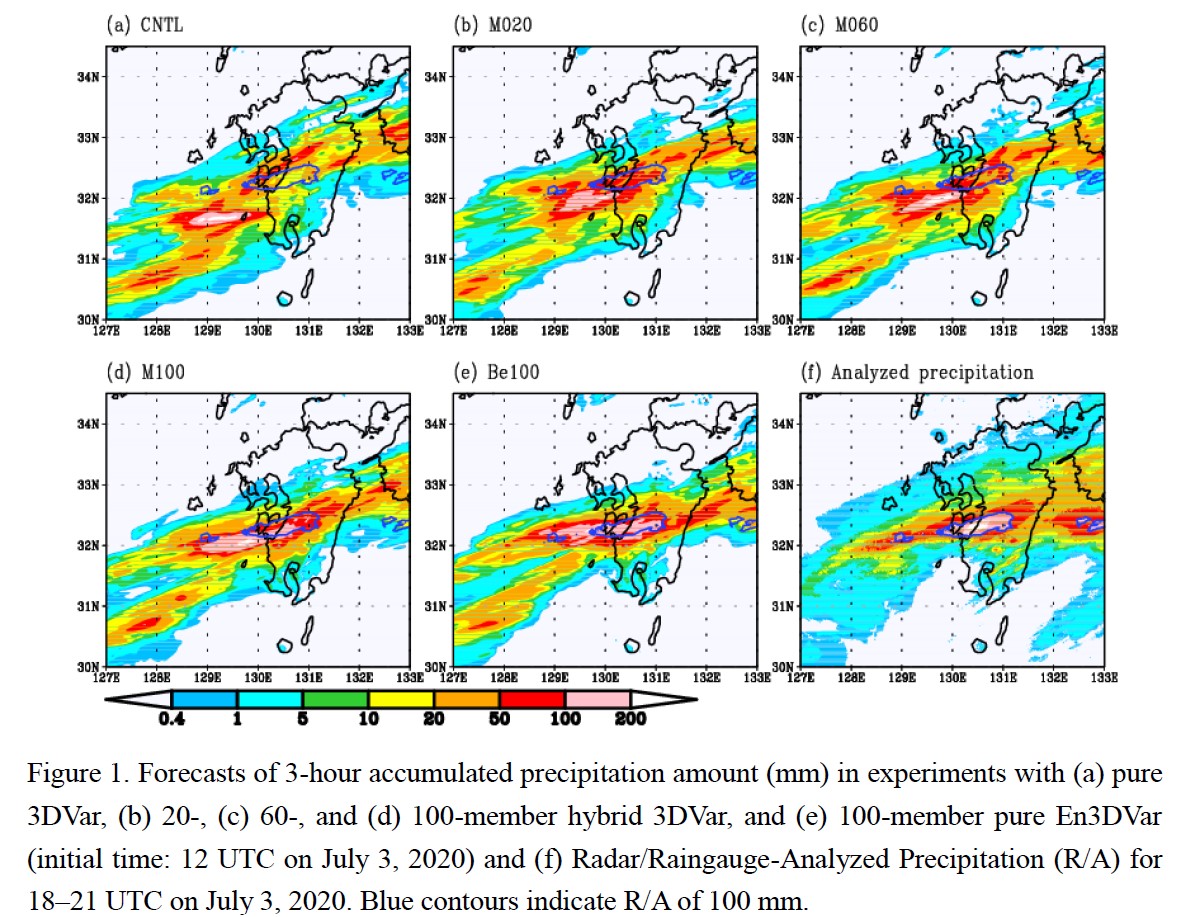JMSJ Highlights
Editor's Highlight : Yokota et al. (2024)
Yokota, S., T. Banno, M. Oigawa, G. Akimoto, K. Kawano, Y. Ikuta, 2024: JMA operational hourly hybrid 3DVar with singular 3Vector-based Mesoscale Ensemble Prediction System. J. Meteor. Soc. Japan, 102.
https://doi.org/10.2151/jmsj.2024-006.
Graphical Abstract
Editor in charge: Dr. Daisuke Hotta
-
I highlight this paper which describes development of a hybrid 3DVar which does not require a separately-run ensemble data assimilation systems for producing ensemble perturbations.
- Flow-dependent background error covariance is constructed from ensemble perturbations generated by a singular-vector method.
- Singular vector perturbations can be computed without waiting for the arrival of new observations and are readily available from the already-operated ensemble prediction system. Hence, the proposed method allows for timely execution of analysis, which is an essential requirement for the rapidly updated data assimilation system whose main target is early warning of high-impact weather events.

Abstract
This study hybridizes the background error covariance (BEC) of the hourly atmospheric three-dimensional variational data assimilation (3DVar) in Local Analysis (LA) operated at Japan Meteorological Agency using the flow-dependent BEC derived from the singular vector-based Mesoscale Ensemble Prediction System (MEPS) and the static BEC. The impact of introducing the hybrid BEC into the 3DVar is examined, along with its sensitivities to various factors like the ensemble size that is augmented by using lagged ensemble forecasts, the weight given to the ensemble-based component of BEC, the localization scales, and use (or not) of the cross-variable correlation. This hybrid 3DVar system can be operated with small additional computational cost because it has no coupling with another ensemble data assimilation system. In sensitivity experiments, this hybrid 3DVar is shown to yield smaller forecast root-mean square errors than the pure 3DVar, especially for surface variables. Moreover, the hybrid 3DVar shows better equitable threat score for strong precipitation.
These improvements were greater in the experiments with larger ensemble sizes that were increased by using lagged ensemble forecasts because of the reduced sampling errors in the ensemble-based BEC. These results were sensitive to the weight given to the ensemble-based BEC and the horizontal localization scale, whose optimal values were found to be approximately 0.5 and 100 km, respectively. The longer vertical correlation scale and the cross-variable correlation were also found important to create dynamically-balanced analysis, which is especially true for heavy rain cases.






